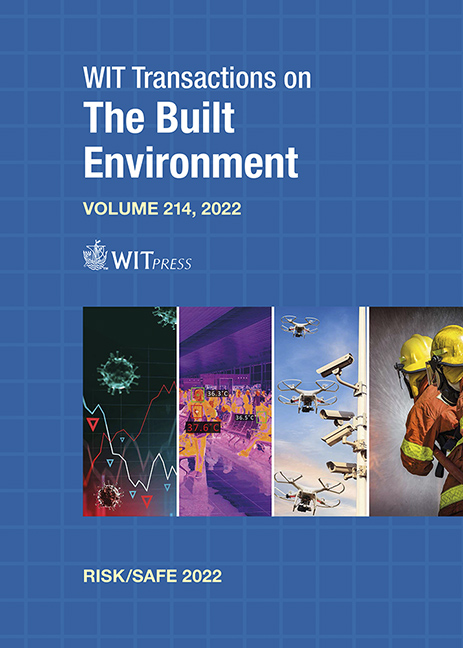CAN WE ASSESS LANDSLIDE HAZARDS IN THE VOLCANIC CRATER OF LAKE ALBANO, ROME, ITALY?
Price
Free (open access)
Transaction
Volume
214
Pages
23
Page Range
3 - 25
Published
2022
Paper DOI
10.2495/SSR220011
Copyright
Author(s)
ANTONIO PATERA, ANDREA FABBRI
Abstract
This study applies mathematical models for assessing landslide susceptibility around Lake Albano, a volcanic crater and resort area near the city of Rome, Italy. The hazards are mass movements of many different types, recorded for more than 2,100 years that continue occurring to date encroaching with expanding urbanization and socioeconomic activities. The study area surrounding the lake occupies 30 km2, in the form of a digital raster of 1002 pixels × 1202 lines at 5 m resolution: 975,093 above the water level and 229,311 below it. Of those, 8,867 pixels indicate the location of 150 sub-aerial landslides and 34,028 pixels that of 65 sub-aqueous landslides, respectively, that is, high densities of mass movements. A database collected the most available information on the landslides: distributions, types, linear and polygonal forms, and sub-aerial or sub-aqueous locations. Digitized categorical maps of land use classes and lithology units, in addition to a continuous field of high-resolution topographic elevation data, represented their physical settings. From a dense grid of elevation points, continuousvalue maps at 5 m resolution were the following: aspect, digital elevation model, slope, curvature, planform, and profile. The results of prediction modelling by a fuzzy set membership function and a logistic discriminant function were digital images ranking the study area into relative levels of susceptibility. The spatial support of the settings varied with landslide types and physiographic conditions. The levels integrated empirical likelihood values representing the contrast in settings for all the pixels in the presence of the landslides with the pixel in their absence for each landslide type within the study area. Such ranks tend to overlap in predictions from the two models and for different types of landslides. Predicting landslide susceptibility for the area is feasible and with low uncertainty; however, the volcanic and socioeconomic context is a main challenge to measures of hazard and risk avoidance.
Keywords
landslide susceptibility, volcanic crater, fuzzy sets, logistic discriminant functions, spatial support, prediction modelling




